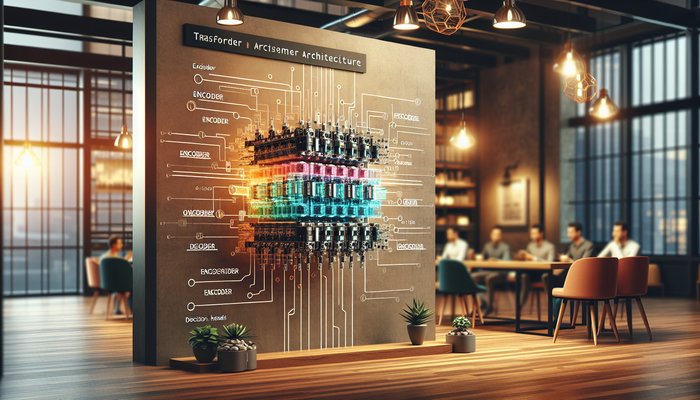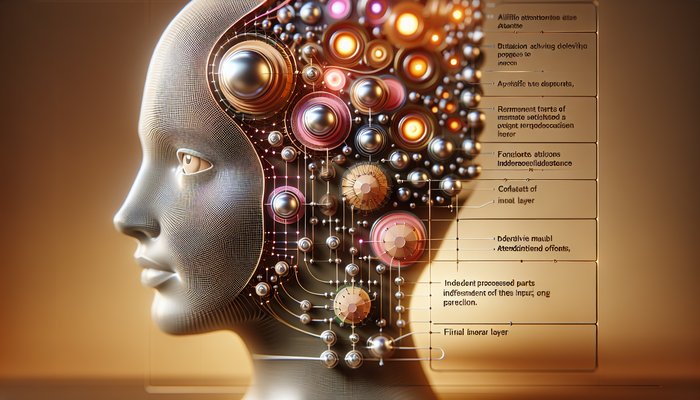Introduction to LLM Transformers
Large language model (LLM) transformers have emerged as a cornerstone in modern ai research by transforming how machines understand and generate human language. This comprehensive guide explores the inner workings of transformer architectures, explaining their components, training processes, and the innovative scaling laws that enhance their efficiency. Whether you are a seasoned researcher or a technology enthusiast, this article offers deep insights and detailed summaries drawn from trusted sources.

Historical Milestones and Evolution
The story of LLM transformers began with the groundbreaking paper “Attention Is All You Need” published in June 2017. This seminal work laid the foundation for a series of influential models including GPT (June 2018), BERT (October 2018), GPT-2 (February 2019), DistilBERT (October 2019), as well as the sequence-to-sequence models like BART and T5 (October 2019) and the monumental GPT-3 (May 2020). Each generation of these models has achieved noteworthy performance improvements by capitalizing on the transformer’s scalable and efficient design.
Transformers are primarily categorized into three types based on their structures and applications: encoder-only models tailored for understanding tasks, decoder-only models designed for generative tasks, and encoder-decoder architectures which provide the capability to translate, summarize, and perform complex sequence-to-sequence tasks. This categorization underscores the versatility that has driven the success of transformers in various ai applications.
- Encoder Models: Primarily used for tasks that require text understanding and analysis, such as sentence classification and named entity recognition.
- Decoder Models: Essential for generative tasks including natural language generation and text completion.
- Sequence-to-Sequence Models: Combine the strengths of encoders and decoders to manage tasks like translation and summarization.
Core Architecture and the Attention Mechanism
At the heart of transformer models is the attention mechanism which enables the model to focus on important parts of the input when processing language. The process begins with an input feature matrix X, which is linearly transformed to produce three matrices: queries (Q), keys (K), and values (V). The standard attention output is computed using the equation softmax((Q · Kᵀ) / √d_k) V. Here, the scaling factor √d_k is critical for stabilizing the dot product values and ensuring robust performance across varied contexts.
To further enhance this mechanism, transformers employ multi-head attention. Instead of a single attention computation, the model divides the process into multiple parallel operations (heads). Each head processes a subsection of the input’s features using its own set of linear transformations. After individual attention computations, the outputs are concatenated and passed through a final linear transformation to generate the final result. This approach allows the model to capture a wide range of relationships and contextual clues from the input data.

Training Strategies and Transfer Learning
Transformer models are built through a two-step training process. The first step, known as pretraining, involves using self-supervised learning over huge corpora of text to capture the statistical essence of language. This process may include tasks such as causal language modeling or masked language modeling, enabling the model to learn from vast and varied data without explicit labeling.
Once the foundational knowledge is acquired, the model enters the fine-tuning phase. Supervised learning is applied to adapt the pre-trained model to specialized tasks such as text generation, classification, or summarization. This efficient transfer learning approach drastically reduces the need for massive amounts of task-specific data, while also lowering computational and environmental costs.
The Pivotal Role of Attention Layers
The attention layers in transformer models are instrumental in defining how text is processed. When handling applications like translation, each word in the output is generated by referencing a combination of relevant words from the input sequence. This dynamic selection is orchestrated by the attention mechanism, which assigns weights to different parts of the input based on their relevance.
Multi-head attention further diversifies this capability by allowing separate attention distributions to operate in parallel. This setup facilitates capturing subtle language nuances and complex interdependencies in text, resulting in more accurate and context-aware language generation.
Scaling Laws and Efficiency Improvements
Scaling laws describe the relationship between model size, data, compute, and overall performance gains. By increasing the number of parameters and the volume of training data, transformers exhibit reduced loss values and enhanced accuracy on various benchmarks. For example, a tenfold increase in model size can theoretically result in about a 20% reduction in loss under controlled conditions. However, these benefits are task-dependent, and empirical evidence indicates that certain applications can experience even steeper performance gains.
Real-world applications, such as the leap from GPT-3 to GPT-4, demonstrate that increased compute can lead to dramatic improvements on challenging benchmarks like MMLU. The trade-off, however, is the significantly raised infrastructure and computational demands required to train these larger models. Consequently, modern research is focused on hybrid strategies that integrate advanced reasoning models and optimize inference processes to achieve high performance while controlling costs.
- Direct Scaling: A substantial increase in model parameters typically correlates with improved performance, though the gains can vary based on the application.
- Task-Specific Improvements: Targeted tasks sometimes yield efficiency improvements beyond baseline predictions.
- Resource Management: Enhanced models require innovative training methods to manage computational and environmental costs.
Integrating Transformers with Modern Workflow Tools
LLM transformers are not only pivotal in research but also in practical applications that integrate with everyday software. With seamless integrations into platforms such as Google Drive and OneDrive, users can harness the power of transformers to extract meaningful summaries and insights from vast repositories of data with ease.
For instance, DataChat by Moodbit transforms collaboration by integrating seamlessly with platforms like Slack, allowing teams to access, share, and analyze data without switching between multiple applications. This approach not only boosts productivity but also supports data-driven decision-making across organizations.
Conclusion and Future Directions
The expansive world of LLM transformers continues to evolve as research pushes the boundaries of what these models can achieve. From the early innovations in attention mechanisms to the complex scaling laws that drive modern advancements, each innovation brings us closer to realizing the full potential of ai. As the field advances, new hybrid strategies and efficient training methods are emerging to balance performance with practicality.
We invite you to explore further and dive deeper into these subjects through resources like the Hugging Face NLP Course, where you can enrich your knowledge with detailed explanations and visual aids. Embrace the journey with Moodbit and unlock the full potential of transformer technology to drive innovation and transform your data-driven workflows.
Leave a Reply